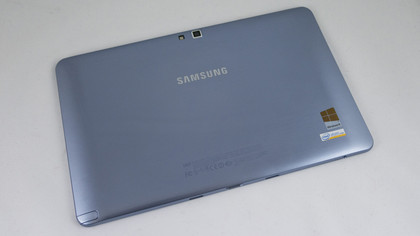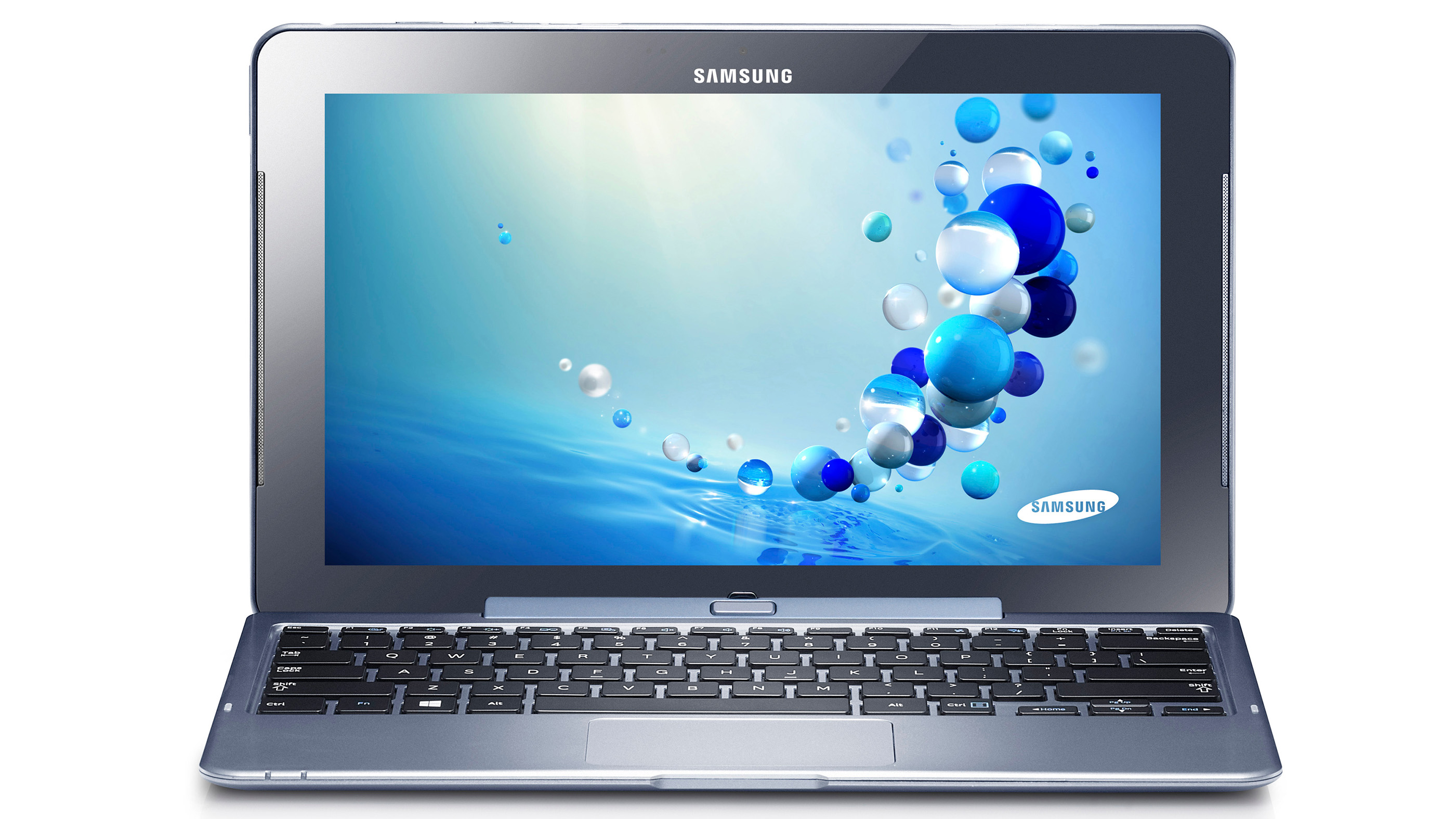Why you can trust TechRadar
As we said before, we know the Samsung Ativ Smart PC is not a high-powered machine. Let's get the benchmarks out of the way immediately, so we can talk about what it's like to actually use it.
Benchmarks
Cinebench R10: 711
3DMark 06: 371
Battery Eater Pro 05: 317 minutes
The performance benchmarks are abysmally poor. Ludicrously low. The Asus Zenbook UX32A costs around the same price, but scores 9,145 in Cinebench. Yes, that's almost 13 times the score.
Perhaps some better context might be against a mobile device: we also ran Geekbench on the Ativ, and compared it to an iPad 4. The Samsung Ativ Smart scored 1,377, the iPad bested it with 1,770. OK, so now we know what ballpark we're in, but remember that the Ativ runs full-on Windows 8 with this meagre processor offering.
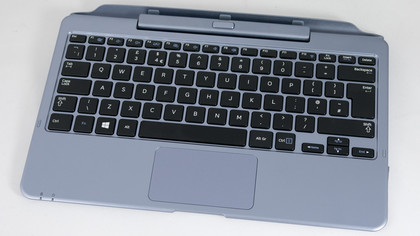
It's a similar sort of deficit for the graphics - the HD 4000 graphics in the Zenbook UX32A are around 13 times as powerful.
But perhaps we see the reason why these are so low in the battery life benchmark: a colossal 5 hours and 17 minutes. This is a truly great score, and should mean that you get about a normal working day's use out of the Ativ Smart PC.
We did encounter one snag here, though. At 9am one morning, we grabbed the Samsung Ativ Smart PC at full charge and chucked it in our bag. At 5.30 that evening, we took it out to use and discovered that the battery had dropped to 20% during the day.
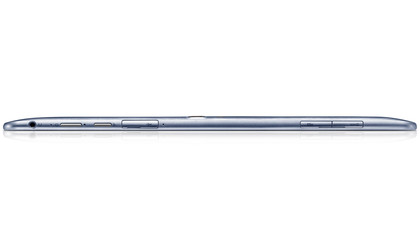
We had it in the clamshell during that time, but as far we could tell, it was on standby, so that level of power loss is concerning - if you left it on standby overnight, it might be flat by the morning. Most Ultrabooks and the MacBook Air are designed to stay alive on standby for a lot longer than this, so it does harm it as a work computer.
Perhaps also disappointing, then, is that the clamshell doesn't offer any extra battery life, unlike the keyboard attachments for Asus Transformer Prime or the Acer Iconia W510.
Regardless, the battery life is still possibly the strongest point of the Ativ Smart PC. While the rest of it has decent moments, it's all not good enough for the price.
Performance is all over the place, usually running smooth enough if you're just in the Windows 8 Tiles menu, but crunching to a halt any time you want to do anything.
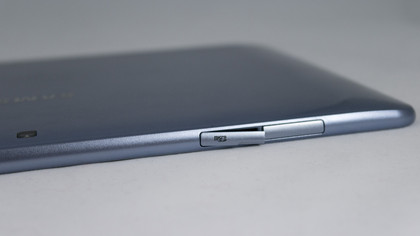
The thing is, every operating system has quirks, especially new ones, that you live with. But now you get the fun bonus game of guessing what's a quirk and what's a crash. You know the processor is slow, so should you just wait for a slow app to load, or assume nothing is going to happen?
Very simple games will run, but often with major controller lag or something else, and that's if the framerate is tolerable in the first place.
Generally, it's the not the newer, optimised Windows 8 stuff that's the problem (despite apps being sluggish to open), but anything outside that was inconsistent.
At one point Chrome just stopped loading web pages. Another time, The Samsung Ativ Smart PC just stopped installing software. For two days, trying to drag windows around the touchscreen was borderline impossible, due to the lag being nearly two seconds.
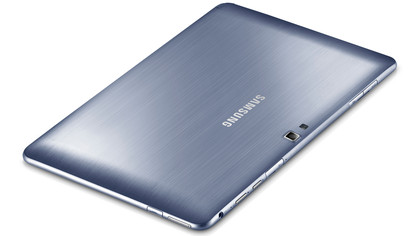
All of these things fixed themselves later (for one of them, we tried to restart the Samsung Ativ Smart PC Ativ, which also caused it to crash, restarting forever. Well, probably forever. We gave up after half an hour).
What caused these problems? Will they come back again? These are not questions you should have to ask of a brand new £699/US$749.99/AU$999 computer.
The trackpad is equally odd, sometimes declining to respond the first few times you run your finger over it. When it does work, it's fine. The click is a little loud, but it functions. The keyboard on the clamshell is similarly average - the key size is really good, with a nice layout, but the keys are a little soft and dead, so don't give a lot of feedback. You can work on it comfortably, though.
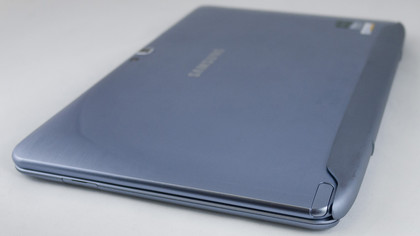
We could add more here - the finicky light sensor, the way most background tasks bring the OS to a halt (which is especially annoying when the pre-installed Samsung update software appears from nowhere, demanding that you start updating and giving you no option to cancel, thus destroying your productivity until it finally finishes loading, at which point you can get rid of it) - but there's no point in droning on.
It's important to say that the Samsung Ativ Smart PC does function, but it's with a litany of irritations. Yes, it works. No, it did not work well for us.
There some good parts to note, though. The screen is bright enough, and offers pretty good viewing angles. The touchscreen is also responsive, even when the operating system is not.
And while we're on the touchscreen, the S-Pen is a great addition. It flows in and out unobtrusively, and offers precision that's in another league compared to what you get from capacitive iPad styluses. You can track the dot around by hovering just above the screen, and then draw with pixel precision.
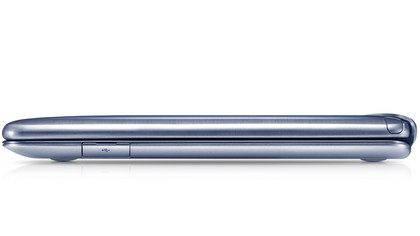
The thing is, the pen is too small and fiddly to be good for long sessions (for artists, say), so isn't so much a selling point as a nice bonus. It's excellent for note-taking in the built-in S Note app, though.
Being based on flash storage, the Samsung Ativ Smart PC turns on pretty damn quickly, and wakes from sleep more or less instantly. That's all great, but the issue of the amount of space rears its head here, as it did with the Surface Pro.
Though it's billed as having 64GB of storage, the actual free space in the Samsung Ativ Smart PC is about 26GB. You can add more storage with the microSD card port, or by attaching portable storage to the USB port, but this is something that needs to be taken into consideration.
For comparison, a 64GB iPad offers around 57GB of usable space, the 64GB Surface Pro offers around the same amount of space as the Samsung Ativ Smart PC, and the 64GB Surface RT offers around 45GB of space.
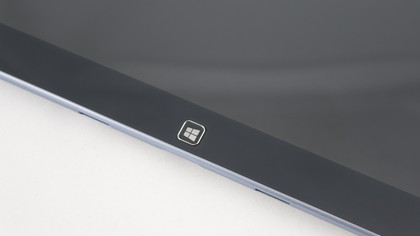
In terms of holding it and using it as a tablet, the extra weight over something like the Google Nexus 10 or the iPad 4 is noticeable. The 16:9 screen is also somewhat severe in its width or height (depending on how you hold it) compared to many of these tablets, and is massively lower in resolution, despite being slightly larger.
Personal preference comes into play here, but for us, a 16:9 screen isn't good for tablets, even if it is a better ratio for watching movies on.
Basically, it isn't all that pleasant to use as a standard tablet - at least, not compared to the competition. Oh, and the screen is a nightmare to get fingerprints off, and the clamshell gets discoloured really easily.
